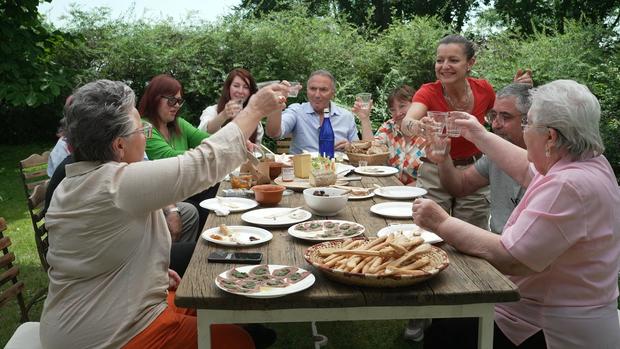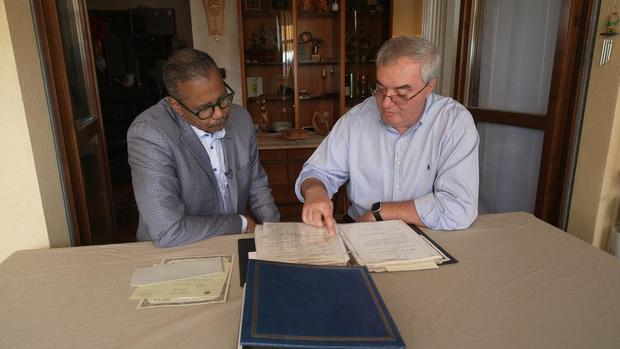The 1950s and 60s were supposed to be times of renewal for the world, but for thousands of Italian mothers, it became a period marked by heart-wrenching separation and lifelong grief. In an uncovered dark chapter of the Catholic Church’s history, 3,500 Italian children were sent to the United States on orphan visas. The twist? Many weren’t orphans at all—they were forcibly taken from unwed mothers, who were misled, shamed, or outright deceived.
This haunting tale resurfaced through a detailed investigation featured on 60 Minutes and in Maria Laurino’s new book, The Price of Children. The revelations have sparked fresh outrage, shining a harsh light on a time when unmarried mothers were treated as outcasts, and their babies were seen as commodities.
A Life Built on a Lie: John Campitelli’s Story
John Campitelli was one such child. Born in Italy as Piero Davi in 1963, his story is emblematic of the thousands of children who were swept up in this controversial program. His mother, Francesca, was unmarried—a social death sentence at the time—and forced by her family to give him up. She handed her baby to nuns in a Catholic-run institution for children of unwed mothers, believing she could return for him when her situation improved.
But that wasn’t what happened. Without her knowledge, Francesca’s name was removed from Piero’s birth records, transforming him into an “orphan” eligible for adoption. Francesca never signed any paperwork consenting to this, yet Piero was shipped across the Atlantic, growing up with a new name, John Campitelli, in America.
Campitelli discovered the truth only after years of searching. When he finally reunited with his mother in his late twenties, she revealed the gut-wrenching truth: she had always intended to come back for him. In a deeply emotional reunion, Francesca baked him a cake, saying, “We need to celebrate because our prodigal son has finally come home.”
This story isn’t unique. Many mothers, like Francesca, were misled into believing they could reclaim their children when their circumstances improved. Instead, their children were whisked away to America, sold to adoptive families who were none the wiser. For the mothers left behind, the pain and loss lasted a lifetime.

The Church’s Role in the Program
The Vatican played a central role in orchestrating this scheme. The program thrived, in part, because of a 1950 U.S. law that expanded the definition of an orphan. This law included children with one parent unable to provide care, a loophole that the Church exploited to send thousands of children overseas. Documents uncovered by Laurino revealed that U.S. visas were arranged with the Church’s help, while families were often kept in the dark about their children’s fate.
The story doesn’t stop with John. Thousands of adoptees are still struggling to piece together their shattered histories, and many birth mothers continue searching for the children they were told had died. In some cases, doctors or lawyers forged signatures, sealing adoption agreements without the mother’s knowledge. Others, like Anna Maria, were told outright lies.
Anna Maria, another woman featured in Laurino’s book, was told her son Christian had died while in a Church-run institution. She spent years grieving, only to discover decades later that he was alive and had been adopted. “It was a swindle,” she said. “They stole a child that they wanted.”
Racism Scandal: YouTuber Koko DC Leaves Charity Match After Chants at Atletico Madrid Stadium
A Machine for “Orphans”
While the demand for adoptive children in America surged, local priests in Italy were sent to scour rural areas for more babies. It wasn’t just a humanitarian effort—it became a machine. The Church charged adoptive families $475 per child, the equivalent of about $4,500 today. As demand grew, so did the search for “orphans,” often targeting the most vulnerable—babies born out of wedlock.
The Vatican’s justification? They believed they were providing these children with better lives in devout Catholic homes in America. But what about the mothers left behind, and the adoptees who spent years searching for their true identities? The Church’s argument falls flat when faced with the grief and trauma that has haunted these families for generations.
Campitelli, for example, described his entire life as “based on a lie.” He grew up in a loving American family, but once he learned the truth of his adoption, he became obsessed with finding his birth mother. The emotional weight of knowing that his mother had never wanted to give him up has followed him ever since.
“I felt that my whole life was based on a lie. They told her that they would take care of me and that was a lie,” Campitelli said. “They cut all relationships that I could possibly have with my birth family, and they shipped me overseas. I became a package for them.”
The Forgotten Voices of the Mothers
Laurino’s research uncovered countless letters from these heartbroken women. One such letter, written by a mother to Monsignor Landi, the American priest who ran the program, pleaded, “I beg that my children be repatriated. If I cannot again see my children, I will shorten my life. I find myself deceived and I do not even know how…”
These women weren’t just victims of circumstance; they were disposable in the eyes of society and the Church. Laurino calls them “disposable women,” whose rights and feelings were secondary to a program built on secrecy and deception.
Some women, like Anna Maria, never stopped searching for their children, even after being told they had died. Laurino found countless examples of this cruel lie being used as a psychological “closure” for the Church, rather than facing the anguish of telling a mother her child had been adopted without her consent.

A Ripple Across Generations
The Vatican’s orphan program ended in 1970, but its effects are still being felt today. For adoptees like Campitelli and Mary Relotto—another adoptee who discovered her large birth family years after her adoption—the program has left a deep emotional scar.
Relotto, who grew up in Ohio, recalled the moment she first met her birth mother, Anna Maria, in 1992. “The only thing I could do was stare and look at every inch of her for at least an hour,” she said. “Not only does she look like me, but she acts like me. I act like her. We’re the same weight. It’s almost like this is my twin, but older.”
The reunion didn’t erase the pain of separation, but it did provide some sense of closure. Relotto explained that while she had a happy life in America, she longed for the large family she later discovered in Italy.
But, like Campitelli, she remains deeply angry at the Church. “Instead of helping her maintain a house and feed her children, they took her children,” Relotto said. “So, am I angry at the church? Hell, yeah, I am.”
A Call for Justice
The Vatican has apologized for forced adoptions in Belgium, but as of yet, no formal apology has been issued for the thousands of Italian children sent to America. The damage is done, but the fight for recognition and justice continues.
For the adoptees and mothers whose lives were upended by this program, closure remains elusive. They are left to pick up the pieces of lives shaped by deception, secrecy, and forced separation. Many are still searching for their birth families, while others continue to grapple with the emotional fallout of a life built on lies.
If there’s one thing that stories like Campitelli’s make clear, it’s that the Church’s actions have had long-lasting consequences, and the truth is still emerging. The Vatican may never be able to right the wrongs of the past, but acknowledging the full extent of this dark chapter is a step toward healing.

